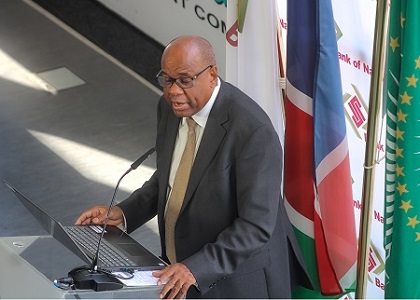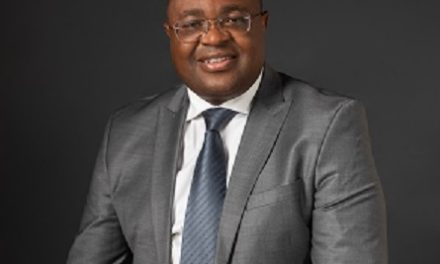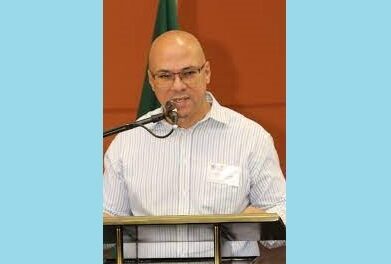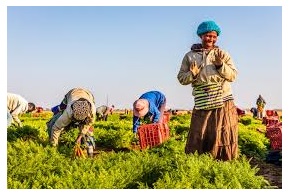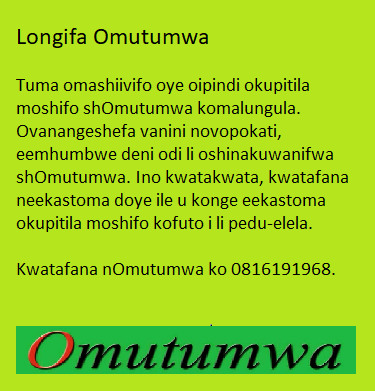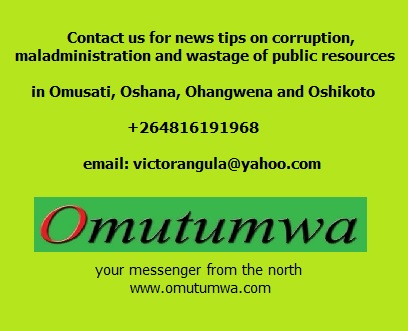The Governor of the Bank of Namibia, Mr Johannes !Gawaxab embarked on a stakeholder engagement in Lüderitz, //Karas Region, to highlight key opportunities presented by the recent oil and gas discoveries as well as green hydrogen developments.
With its rich oil and gas industry, the region holds significant potential for growth and development. The rigorous engagement reflected on key sectors and industries that can serve as catalysts for economic diversification and expansion.
The stakeholder engagement, which started on the 3rd of April 2024 and ended on the 4th of April 2024, included a public lecture by the Governor, titled “Positioning Namibia’s Oil & Gas Endowments: Avoiding the Dutch Disease”.
The Governor started his message by explaining the ‘Dutch Disease’, a paradox that countries with an abundance of natural resources (like fossil fuels and certain minerals) tend to have less economic growth, less democracy and worse development outcomes than countries with fewer natural resources.
He cautioned that despite the oil and gas discoveries, growth is not guaranteed, due to the volatility of commodity prices, and that if the country did not have a long-term goal and vision for the future, it might fall into a Dutch Disease.
!Gawaxab underscored the critical importance of the country adopting strategies to foster and maximize economic growth. By drawing on various case studies, he highlighted the disparity between oil-producing nations that haven’t leveraged their oil discoveries for significant development and those that have successfully utilised their oil wealth to escape the resource curse.
Successful examples involved implementing stringent anticorruption measures and effective resource revenue management, ensuring the benefits extend to future generations.
“The oil doesn’t belong to us alone; it’s also the inheritance of future generations,” he remarked. He also emphasised the importance of economic diversification, cautioning against an overreliance on oil and gas revenue due to the volatility of commodity prices.
According to !Gawaxab, given the abundant oil and gas resources and green hydrogen potentials, the Lüderitz town possesses immense economic and developmental possibilities.
However, various challenges, including infrastructure limitations and limited access to capital, may hinder the southern coastal town’s growth, as well as the overall growth of the southern region.
Understanding the need to tap into this potential, the Governor took the initiative to engage with stakeholders and develop strategies to address these challenges head-on. He noted that there is a need to position Namibia’s oil and gas endowments and manage the inherent Dutch Disease risks that comes with natural resource development.
“By unravelling and promoting economic growth opportunities, investing in infrastructure development, advancing the manufacturing sector, access to financial services, and fostering innovation and skill development, the region can unlock its full potential and pave the way for sustained economic development,” said the Governor.
!Gawaxab also emphasised that Lüderitz should not abandoned what it is known for, which is the fishing industry, and that it should work towards building its current structure with what is to come. This, he noted, would ensure that Lüderitz would not fall in the Dutch Disease trap.
The Governor also highlighted the importance of enhancing Lüderitz’s tourism and hospitality sector, along with its educational institutions and healthcare facilities, to accommodate the anticipated increase in population.
“Through the joint efforts of the local community and businesses, Lüderitz is on the cusp of transforming into a bustling hub of economic and energy activity, thereby boosting prosperity and improving the living standards of its inhabitants,” he remarked.
Additionally, in recognizing the town’s potential, the Governor pointed out that Namibia’s largest dam is located in the //Karas region. He stressed the significance of food security, advocating for the utilization of the dam in agricultural production and water management to ensure the region’s sustenance and resilience.
To conclude his lecture, the Governor emphasised on the work that the Bank of Namibia was involved in, to prepare for the oil and gas endowments the country is about to tap into.
These included various research works aimed at macroeconomic stability, potential implications for exchange rate and monetary policy stability, benchmarking exercises as well as the sound management of the Welwitschia Sovereign Wealth Fund which is operational.
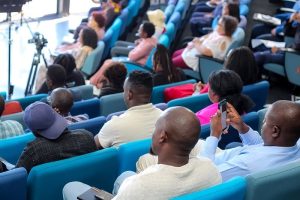
In the photos: Bank of Namibia Governor engaged with !Karas region residents at Luderitz.

